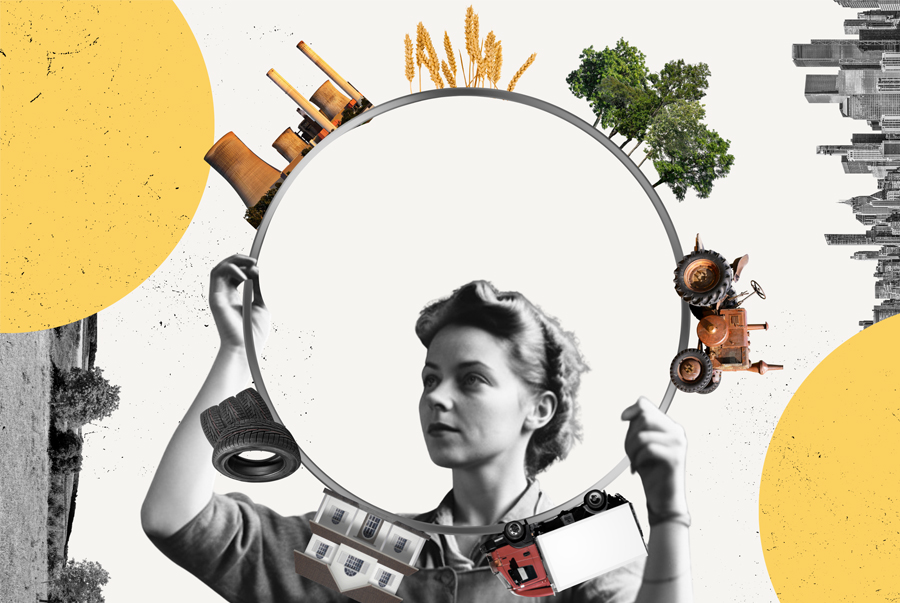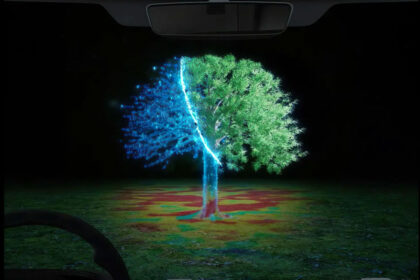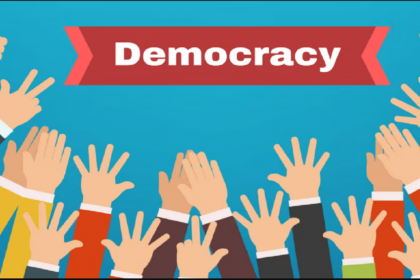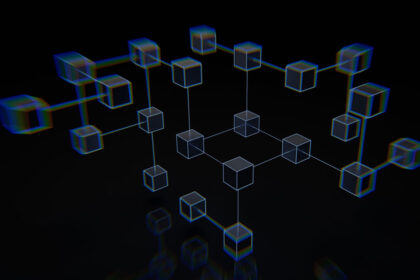Hi readers! After attention economy, here is circular economy: another catchy word used to get attention and convince countries to adopt this practice.
In this model, production and consumption revolve around
Sharing: like we share our apartment, bungalow, or farm (like Agriculture, Fish, Poultry, Sheep and/or Animal farm)
Leasing: like we lease out our extra apartment, house, farm and even cloths that we intend not to use,
Reusing: like using leased out cloth, kitchen utensils, leftover food items,
Refurbishing: like buying an old building, apartment, desktop and laptop computers, vehicles and using and/or selling them after repainting and/or repairing the old buildings and apartments, by changing batteries, motherboard and/ RAM of computers and by changing engine, seat covers, brakes, wind screen, tires and by denting painting of old vehicles,
Repairing like repairing: the electric circuits of iron, refrigerator’s doors., gaskets, compressors of refrigerators and
Air conditioners., and damaged parts of apartments, bungalows and, shops and
Recycling: like all plastic were especially the bottles used for drinks, paper cups used for tea & coffee, and iron scrap etc.
The current practices is that when the rich western countries discard their usable items, they usually auction it and ship it to some developing countries where these items are sold in the famous “container market” on less than half of their original price. These items are especially useful for those who cannot afford to buy from the Malls and prefer to buy them from the container market. Even those who can afford, prefer the container market because of the quality of the items and their durability. There are separate markets for such items like clothes, shoes, electronics, crockery, furniture and other house old items. These markets are incredibly famous in the developing countries due to low price, and excellent quality of everything and is a true to type example of “circular economy”.
Circular economy thus emphasize on reducing waste to a minimum limit as it allow re-use of product’s material after they complete their life cycle thereby allowing material to be kept within the economy which can be productively used repeatedly through enhancing its value. This way it is contrary to the linear economy which relies on take-make-consume- and throw away pattern. The reuse (by whatever means) of such throw away material is the central pillar of circular economy which relies on massive quantities of cheap, easily accessible materials and energy.
There are several “unspoken” examples of circular economy in practice in the developing countries especially in agriculture sector. For example
Sugarcane cultivation
Sugarcane is a high delta crop and is usually cultivated at or near places of uninterrupted water supply. After harvesting, it is crushed to extract juice used for producing cane sugar and jaggery (a natural product of sugarcane). Farmers usually get their cost back through selling these two commodities in the market or thorough exporting them with exceptionally high profit.
Bagasse: a dry pulpy fibrous left over of juice free crushed Sugarcane are then used for production of heat and or energy and electricity, and in the manufacturing of pulp and building materials .
Leftover bagasse still has huge amount of energy potential which can be further utilized in sustainable way to produce biogas. Bio-CNG (compressed natural gas) is being actively promoted in India as a cleaner transportation fuel while also providing a sustainable option for agricultural waste management
Bagasse is a kind of waste material of sugar industry, which is most commonly re-used in paper industries, but researchers have suggested that different mechanical, and chemical treatments can smarten up the “waste material” making it to be re-used again to extract cellulosic fibers, pure cellulose, cellulose nanofibers, and cellulose nanocrystals.
Bagasse is also used as compostable material. It is not accepted in ancillary torrential component (ACT) of household recycling or green waste bins nevertheless; it can be used as an alternative to plastic packaging and food service ware.
Being a compostable material, Bagasse can disintegrate into non-toxic, natural elements at a rate consistent with similar organic materials. To be used for composting, it require microorganisms, humidity, and heat to yield a finished compost product composed of CO2, water, inorganic compounds, and biomass which can be sold in the market for soil amendment for fields or potted soil.
Bagasse can also be used in poultry feed industry because lignin from sugarcane bagasse has “prebiotic potential” as an additive to chicken feed when supplemented in mash feed diets which itself is a sustainable and eco-friendly alternative to chicken feed additives supplementation. It is a form of complete feed that is finely ground and mixed so that birds cannot easily separate out ingredients, Bagasse can add Prebiotic potential which not only effect bacterial population in in chicken but also have an effect on blood circulation by diffusing through the epithelial cells. This way, it affects distant organs and systems thereby reducing losses from death and is therefore, more economical. The poultry dropping can in turn be added to soil where Sugarcane can be grown again. Nothing is lost in the process rather, along with cane sugar, which is the primary product of sugarcane, all the rest are additional income generating processes and products and thus the bonus (a true to type example of circular or no waste economy).
Please see figure below

Figure 1: a true to type circular (no waste) economy.
Another similar example from the agriculture sector is cultivation of Eucalyptus tree which is one of thirsty species that negatively affect the water springs by drawing much water to meet its daily water requirements which is 40- 90 liters per tree per day or 785 liters/kg of total biomass.
The use of the word pump to describe Eucalyptus trees suggested that it generate the force that moves water from the soil to the atmosphere hence, the soil moisture levels are significantly lower in eucalyptus woodlots as compared to other such species.
It is for such reasons that eucalyptus is considered one of the best trees to be grown in waterlogged areas where it grows very fast. Its plantation doesn’t cost much except its water economy which in some areas is unaffordable.
The uses and benefits of growing eucalyptus trees?
Use leaves for dry decoration or to make fresh bouquet for freshening up the room environment
Use Eucalyptus oil which is a natural solvent that dissolves or breaks down sticky bonds such as glue and adhesive and cuts easily through any oil-based stains such as vegetable oil or motor oil grease. It is also great for removing sticky food stains, gum and sticky residue from labels.
Eucalyptus oil is also used as:
Fragrance in soaps, detergents and perfumes industries,
fFotation agent in the mining industry,
Household uses include spot and stain remover and a wool wash component.
Medicinal uses includes
Manufacturing the product to counter cough and cold and to relieve congestion,
In creams and ointments to relieve muscle and joint pain, and
In some mouthwashes.
Eucalyptus oil can be added to cough and cold medicines, dental products, antiseptics and used directly to treat fevers.
Eucalyptus oil is also used in industrial mining operations and as aromatherapy.
Expanding at a CAGR (compound annual growth rate) of 6.8%, the global eucalyptus oil market is predicted to increase from US$ 140 million in 2023 to US$ 270 million by the end of 2033. The use of organic eucalyptus oil is estimated to rise at a significant CAGR over the forecast period. All these are economic generating activities which goes in the favor of the farmers
The use of Eucalyptus leave biomass after oil extraction:
One of the most important uses of Eucalyptus leaves biomass after extraction of oil is its for Biomass-derived activated carbon which is one of the promising electrode materials in supercapacitor applications.
Supercapacitors (SC) are essential for applications where a high-power density is desired. The dominant charge storage mechanism in SCs is non-faradaic and the charges are only stored physically along the surface of the electrode. Charge transfer from the electrolyte to electrode is negligible, if any. This facilitates quick release of electrical charge when needed and thus SCs have a much higher power output compared to batteries. This makes SCs optimum for applications that require quick bursts of charges while managing load fluctuations during power generation.
The biomass produced after oil extracted from eucalyptus leaves has been used as a carbon precursor to synthesize carbon material and is proved excellent electrode material because of its unique properties such as high specific area, excellent electrical conductivity and low production cost and the highest carbon content (approximately 75%) which are superior to earlier used graphene, carbon nanotubes, carbon sphere and carbon nanoparticle.
Supercapacitors are costly. For instance, supercapacitors used in electric vehicles cost USD 2,500 to USD 6,000 per kWh of energy storage, while lithium-ion batteries cost USD 500 to USD 1,000 per kWh. Imagine! how much income can be generated through only this activity?
Eucalyptus: Reliable source of wood
Eucalyptus provide good fuel wood having calorific value of 4962 kcal/kg. Charcoal can be used in gas plants, in pigments, fireworks, gunpowder, rubber-production, animal feeds, and in some other chemical industries. The wood yields a brownish pulp useful in manufacturing wrapping paper and cardboard.
Eucalyptus pulp can be widely used in high-grade writing paper, copy paper, white paperboard, security paper, cigarette paper, toilet paper, napkin and other paper manufacture.
Recycling of all these can
Reduces greenhouse gas emissions that can contribute to climate change by avoiding methane emissions and reducing energy required for a number of paper products,
Extends the fiber supply and contributes to carbon sequestration,
Saves considerable landfill space, and
Reduces energy and water consumption.
Most importantly, eucalyptus trees have a great carbon sequestration value and can store up to a whopping 15.7 tons of CO2 per hectare, per year, after four years of growth. After 14 years of tree age, that number increases up to 25.3 tones. This made eucalyptus an ideal environmental savior.
Eucalyptus wood can be turned into furniture especially the outdoor furniture which upon completing its life cycle can be recycled with the same low carbon footprint as of the original wood and wood waste.
The recycled wood can be converted into valuable by-products like some composite wood panels or be turned into biomass pellets to offset the carbon emissions during harvesting and processing.
It can be burned to produce energy and the ash can be mixed into agricultural fields where crops, fruits and vegetables can be grown.
At the end, nothing is left as everything is consumed, converted, shared or recycled: the component of no waste or circular economy.
That’s all for now dear readers,
See you next week,
Take care, bye.






2 Comments
Dr Muhammad Saghir
July 29, 2023 at 6:00 amMasha Allah, this is a great attempt to explain the circular economy. One massive advantage of bio-Circular economy, in addition to being low carbon or carbon negative in some cases is the rural economic development and job creation. A large number of developing countries need to focus more on bio Circular economy so that they have local positive and sustainable growth. I look forward to more exciting reads in future. May Allah bless you with more time and great health. Ameen.
Keep up the good work !
shafqat
August 30, 2023 at 4:26 pmThank you saghir. Dshib
it is such encouragement that prompted me to write more. Stay blessed. Best regards,
Shafqat